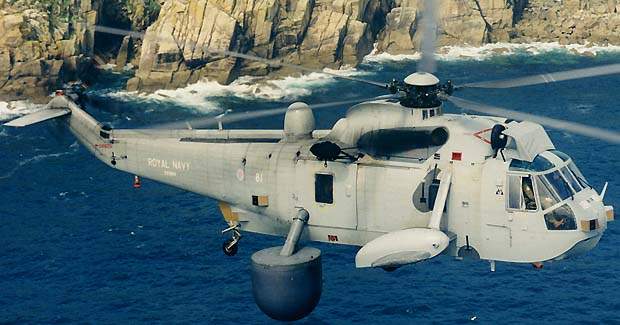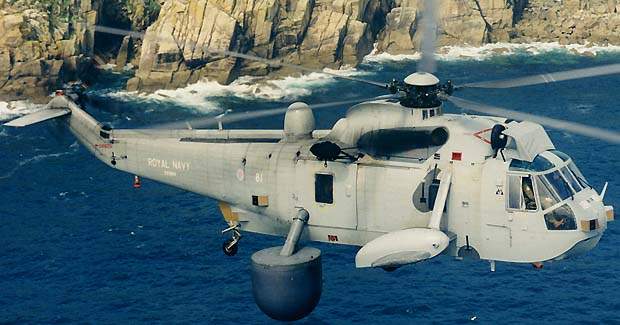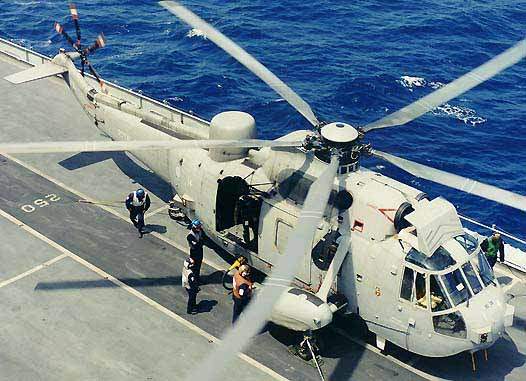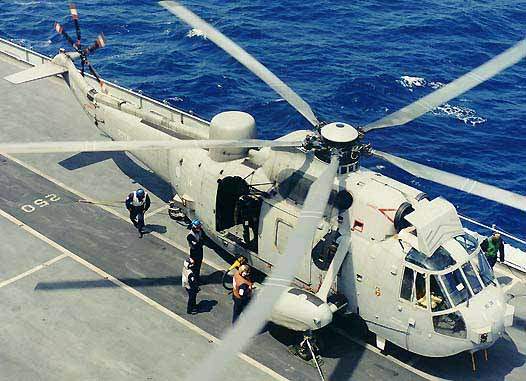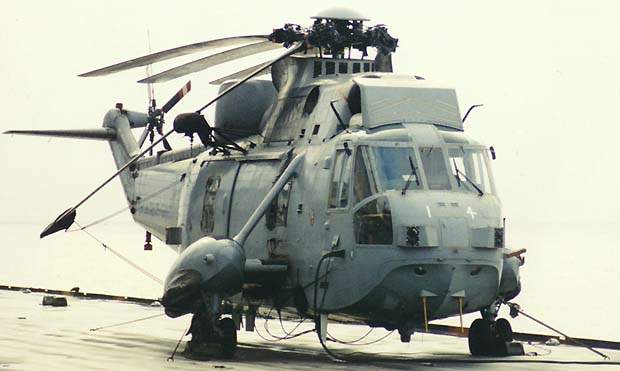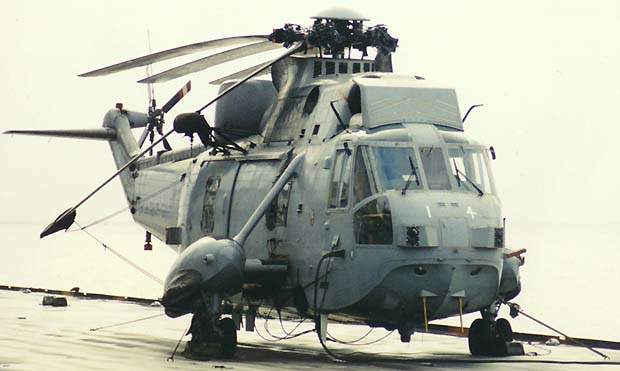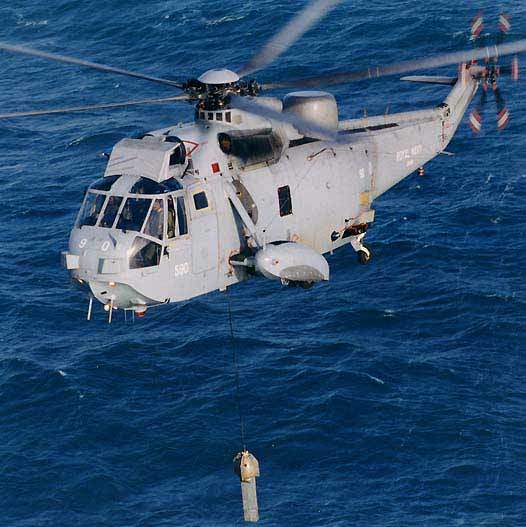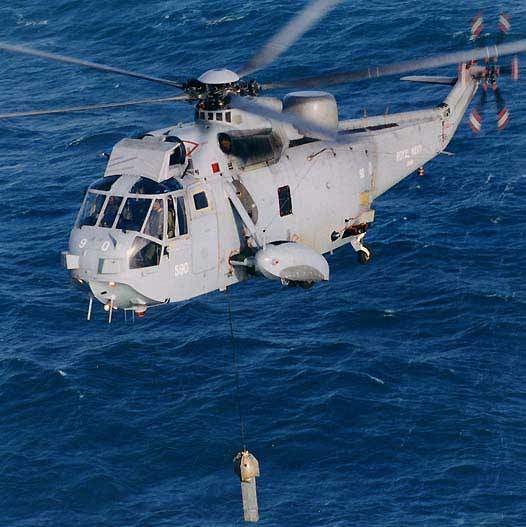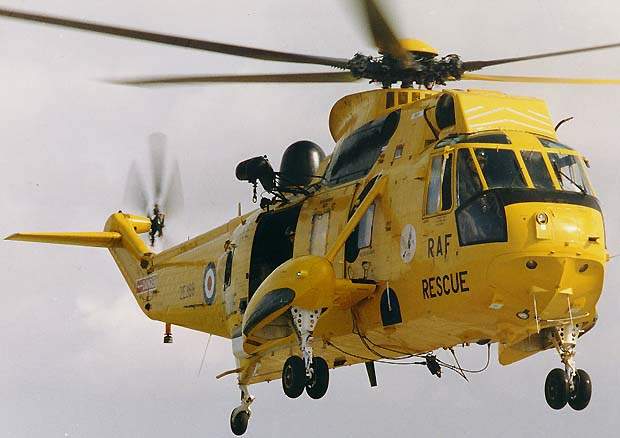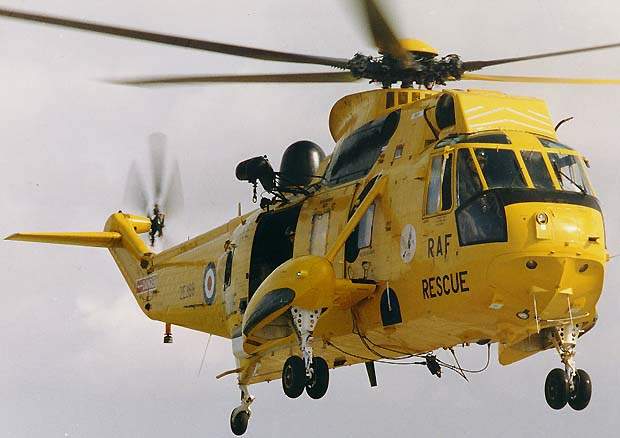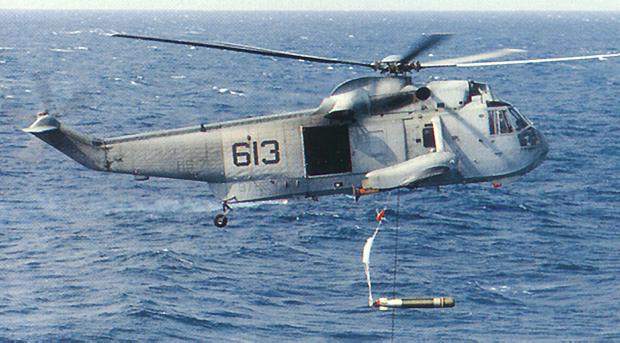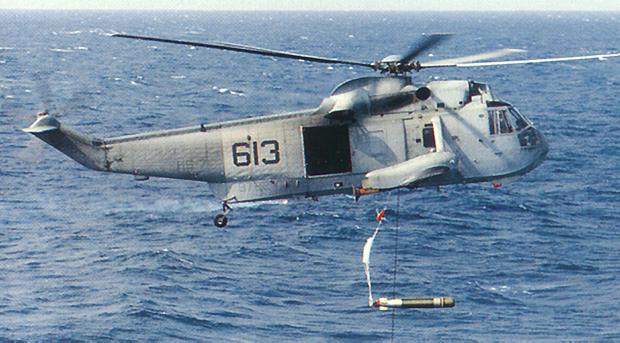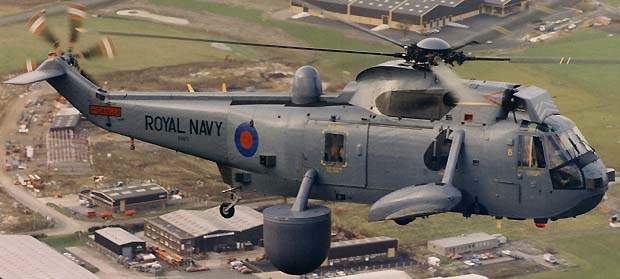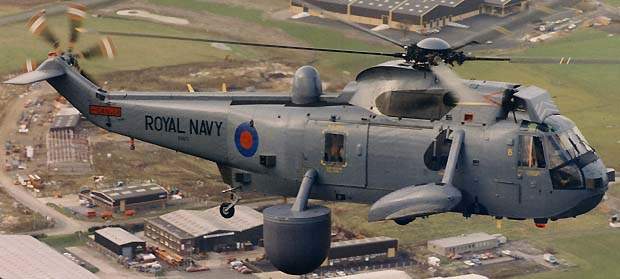The Sea King helicopter is manufactured by AgustaWestland in the UK. Development started in the late 1950s under licence from Sikorsky. Westland initially developed the S-61 as an anti-submarine warfare helicopter (or helicopter anti-submarine, HAS) for the UK Royal Navy. Sea King is also operational as a search-and-rescue (SAR) and airborne early warning (AEW) helicopter.
Sea King has been in service for more than 25 years, and 344 are in service with the Royal Navy, the Royal Air Force, with the navies of Australia, Egypt, Germany, India and Pakistan, and the air forces of Belgium, Egypt, Norway and Qatar.
Under an urgent operational requirement, UK Royal Navy HC mk4 Sea Kings deployed in Afghanistan in 2008 were fitted with new Carson composite main rotor blades and AgustaWestland five-bladed tail rotor. Qinetiq was the prime contractor for the programme.
AgustaWestland awarded a contract to Datum Electronics in 2009 for measuring Sea King gearbox test rig torque by using the Datum RS420 series transducers. The capacity of the RS420 transducers was increased to measure higher torque loading.
The S-61 U-276 Sea King helicopter was retired from the Danish Air Force in April 2011 upon completion of 45 years of service. It has been replaced with the EH101 Merlin aircraft.
Sea King weapons
The helicopter can carry four torpedoes, either ATK (formerly Alliant Techsystems) mk46, Whitehead A244S or BAE Systems Stingray torpedoes. It can also be armed with four mk11 depth charges.
The helicopter can carry two anti-ship missiles, either Sea Eagle or Exocet. Sea Eagle from MBDA (formerly Matra BAe Dynamics, UK) is an all-weather, fire-and-forget, sea-skimming anti-ship missile, with a range of 100km. Guidance is by inertial navigation system with active radar homing.
Sea Eagle is carried by British and Indian Navy Sea Kings. The AM39 Exocet anti-ship missile by MBDA (formerly Aerospatiale Matra) is carried by the Pakistan Navy Sea Kings. The missile has inertial guidance with active radar homing.
Turboshaft engines
The Sea King helicopter is powered by two Rolls-Royce Gnome H1400-1T turboshaft engines, which provide 1,238kW of output power.
The six flexible bag fuel tanks hold 3,700l of fuel, which gives the helicopter a range of 1,500km. For long-range operation, an auxiliary fuel tank can be fitted internally to extend the ferry range to 1,750km.
Anti-submarine warfare
The ASW helicopter is equipped with two type 4 marine markers, two mk2 smoke floats and mini-sonobuoys supplied by Ultra Electronics. BAE Systems type 2069 sonar with an AQS-902G-DS acoustic signal processor provides the capability to carry out dipping sonar operations to a depth of 700ft.
The magnetic anomaly detector is the AN/ASQ-504(V) AIMS supplied by CAE Electronics. The Thales Defence Super Searcher radar is installed on the mk6 fleet of Sea Kings built for the UK Fleet Air Arm. The helicopter is also equipped with the joint tactical information distribution system (JTIDS) terminal IDS-2000 from Rockwell Collins.
The helicopter’s navigation systems include the Thales Defence Doppler 71 navigation radar, Honeywell AN/APN-171 radar altimeter and mk31 automatic flight control system from Smiths Newmark.
Search and rescue
The search and rescue helicopters are equipped with an hydraulic hoist rated at 600lb. The radar is either the Thales Defence ARI5955 or Telephonics RDR-1500B. The Norwegian Air Force Sea King is also equipped with the Telephonics RDR-1300C nose radar.
AgustaWestland was awarded a contract in 1995 to build three new mk3A search and rescue helicopters and to upgrade the Royal Air Force mk3 fleet to mk3A standards. The new systems include Thales Defence ARI 5955/2 radar, Thales Defence RNAV-2 navigation system, Thales Defence Doppler 91 and Cossor STR2000 global positioning system.
With the helicopter configured in the search and rescue role, the cabin can accommodate up to 22 survivors or nine stretchers and two medical officers.
UK Royal Air Force search and rescue Sea Kings are fitted with the FLIR Systems Sea King multisensor systems (SKMSS). The system entered service in June 2004.
Airborne surveillance and area control (ASAC)
The 13 Royal Navy airborne early warning AEW.2 helicopters were upgraded to AEW.7 standard with the Thales Defence Searchwater 2000 radar and Cerberus mission system.
The helicopter’s designation has been changed to airborne surveillance and area control (ASaC mk7). The Searchwater 2000 radar processing system incorporates a new pulse Doppler mode and Link 16 JTIDS (joint tactical information distribution system) datalink. The upgrade programme also included the installation of an additional HaveQuick II secure radio communications system together with an AN/APX-113(V) interrogator transponder from Hazeltine and a video recorder unit.
The first two upgraded Sea Kings were delivered in May 2002 and the programme was completed in 2004. ASaC mk7 helicopters were deployed for the first time onboard HMS Ark Royal as part of Operation Iraqi Freedom in March 2003.
Two helicopters were lost in a mid-air collision during the conflict and, in May 2005, Thales UK was awarded a contract for the conversion of two RN Sea King HAS mk6 ASW helicopters to ASaC mk7 configuration.
Tactical troop transport and logistic support
This tactical troop transport and logistic support variant has a cabin with large sliding access doors for transporting bulky loads. Large loads up to 8,000lb (3,692kg) can be carried underslung. The cabin can be equipped with seats for 28 fully equipped troops.
Performance
The Sea King can climb at the rate of 10.3m/s. The maximum speed is 208km/h. The range and service ceiling of the helicopter are 1,230km and 3,050m respectively. The aircraft weighs around 6,387kg and its maximum take-off weight is 9,707kg.

